Community Forum
Horse World Online
Breed horses and ponies, raise your foals, and train the next champion in this exciting and realistic online horse breeding game.
The new layout is in beta testing and we're inviting you to help us try it out! Click here to read the announcement post for details.
One Surprise Chestnut Colt?
Forum rules
You can link to a horse using our new custom BBCode:
[horse=1234]Horses Name[/horse]
This will display the most recent photo of the horse as well as a link to him.
You can link to a horse using our new custom BBCode:
[horse=1234]Horses Name[/horse]
This will display the most recent photo of the horse as well as a link to him.
-
ArcticDahlia
- Posts: 37
- Joined: Mon Apr 13, 2020 7:27 pm
- Visit My Farm
One Surprise Chestnut Colt?
Post by ArcticDahlia »
So I have these two dapple NABs from the AC (one on here and one on my side):
Dam-
Lena
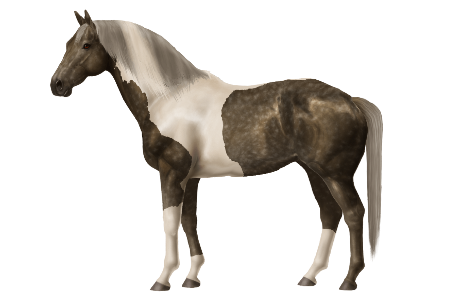
Sire -
Arygryos
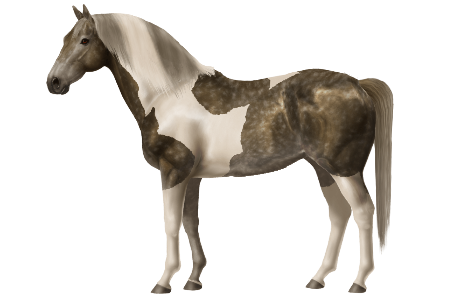
And they've had four fully related foals together (another ~1/3 of the way along):
Colt 1:
Jairo
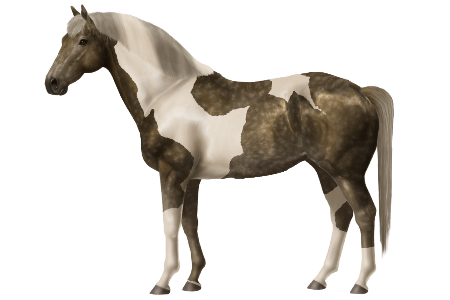
Colt 2:
Kairo
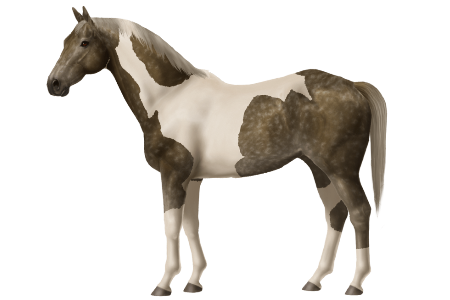
Colt 3:
Tor
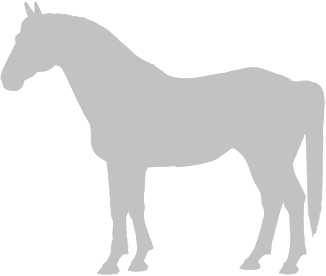
Filly 1:
Ferrah
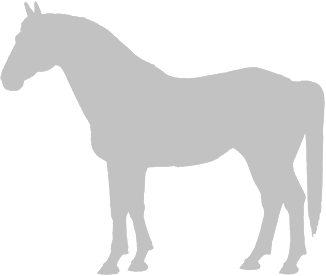
Tor was a bit of a surprise for me, with two silver dapple parents and three SD siblings.. what does that say about the parents genetics, having produced a random chestnut foal?
Also, unrelated note, but it seems the "quality" of their foals go down with each one. Is this something I'm doing wrong with breeding or simply due to Lena's age?
Dam-
Lena

Sire -
Arygryos

And they've had four fully related foals together (another ~1/3 of the way along):
Colt 1:
Jairo

Colt 2:
Kairo

Colt 3:
Tor

Filly 1:
Ferrah

Tor was a bit of a surprise for me, with two silver dapple parents and three SD siblings.. what does that say about the parents genetics, having produced a random chestnut foal?
Also, unrelated note, but it seems the "quality" of their foals go down with each one. Is this something I'm doing wrong with breeding or simply due to Lena's age?
-
PeacefulOreo

- Posts: 4984
- Joined: Fri Sep 07, 2018 7:55 pm
- Location: Eastern USA
- Visit My Farm
Re: One Surprise Chestnut Colt?
Post by PeacefulOreo »
ArcticDahlia wrote:...
BlackOak2 wrote:...
I think it's either a hidden gene or the silver dapple tobiano is on a chestnut base.
As for the quality of the foals, I think it's mostly the genetics that's making some foals better than others?
-
horsesfurever
- Posts: 143
- Joined: Sun Jan 29, 2017 10:10 pm
- Visit My Farm
Re: One Surprise Chestnut Colt?
Post by horsesfurever »
Lena and Arygryos are both silver dapple tobiano, which is silver on a black base. It isn't possible to have silver dapple on a chestnut base because silver does not show up on chestnut bases, only black bases.PeacefulOreo wrote:ArcticDahlia wrote:...
BlackOak2 wrote:...
I think it's either a hidden gene or the silver dapple tobiano is on a chestnut base.
As for the quality of the foals, I think it's mostly the genetics that's making some foals better than others?
Now I'm going to go into a bit of genetics, so bear with me
The very first thing that determines the horse's base coat color is the red/black factor. Black is dominant to red (chestnut) so a black-based horse (either black or an agouti variant) would be either homozygous dominant (EE) or heterozygous (Ee) while a chestnut horse is always homozygous recessive (ee). Since both parents only pass on one gene of the pair, the only way two black-based parents could produce a chestnut foal is if both parents are heterozygous (Ee).
I hope that helps, but if it doesn't then I'm sure BlackOak2 will it explain it much better!
Equine Excellence
High Quality Friesians, Rare Breeds, and More!
Co-Founder of the Realistic Arabian Breeding Association (RABA)
Member of the Norwegian Fjord Breeding Registry (NFBR)
Member of the Norwegian Fjord Breeding Registry (NFBR)
-
BlackOak2
- Premium

- Posts: 10570
- Joined: Sat Jan 30, 2016 12:41 am
- Visit My Farm
Re: One Surprise Chestnut Colt?
Post by BlackOak2 »
horsesfurever wrote:Lena and Arygryos are both silver dapple tobiano, which is silver on a black base. It isn't possible to have silver dapple on a chestnut base because silver does not show up on chestnut bases, only black bases.PeacefulOreo wrote:
I think it's either a hidden gene or the silver dapple tobiano is on a chestnut base.
As for the quality of the foals, I think it's mostly the genetics that's making some foals better than others?
Now I'm going to go into a bit of genetics, so bear with me
The very first thing that determines the horse's base coat color is the red/black factor. Black is dominant to red (chestnut) so a black-based horse (either black or an agouti variant) would be either homozygous dominant (EE) or heterozygous (Ee) while a chestnut horse is always homozygous recessive (ee). Since both parents only pass on one gene of the pair, the only way two black-based parents could produce a chestnut foal is if both parents are heterozygous (Ee).
I hope that helps, but if it doesn't then I'm sure BlackOak2 will it explain it much better!
As for the reason the foals appear to be consistently getting worse, we haven't yet had proof that older horses throw worse offspring. So right now I can assume that it's simply the luck of the draw.
I have had mares in the past, that threw a 'perfect' foal for their very fist one, then thereafter, bred until death, never a good one again. But I've also had mares that threw rather mediocre foals for most of their lives, then pop a gorgeous one much later in life. I've also had mares that regularly threw great-looking ones.
So it's likely an indication that your pair of AC horses, do have some hidden good-stuffs, but that most of their stuffs may not be too great.
Don't forget to check it out!
Quick Start Guide For Newbies
Link to additional information.
BlackOak2's Quick-Links
Quick Start Guide For Newbies
Link to additional information.
BlackOak2's Quick-Links
-
ArcticDahlia
- Posts: 37
- Joined: Mon Apr 13, 2020 7:27 pm
- Visit My Farm
Re: One Surprise Chestnut Colt?
Post by ArcticDahlia »
Thank you for the responses y'all!! So to be clear... I guess I could label them Silver Dapple Heterozygous Black? Also, I'm trying to get used to the short labels that work with coat calculators; would this be an acceptable format:BlackOak2 wrote:horsesfurever wrote:
Lena and Arygryos are both silver dapple tobiano, which is silver on a black base. It isn't possible to have silver dapple on a chestnut base because silver does not show up on chestnut bases, only black bases.
Now I'm going to go into a bit of genetics, so bear with me
The very first thing that determines the horse's base coat color is the red/black factor. Black is dominant to red (chestnut) so a black-based horse (either black or an agouti variant) would be either homozygous dominant (EE) or heterozygous (Ee) while a chestnut horse is always homozygous recessive (ee). Since both parents only pass on one gene of the pair, the only way two black-based parents could produce a chestnut foal is if both parents are heterozygous (Ee).
I hope that helps, but if it doesn't then I'm sure BlackOak2 will it explain it much better!I would've said something very similar.
As for the reason the foals appear to be consistently getting worse, we haven't yet had proof that older horses throw worse offspring. So right now I can assume that it's simply the luck of the draw.
I have had mares in the past, that threw a 'perfect' foal for their very fist one, then thereafter, bred until death, never a good one again. But I've also had mares that threw rather mediocre foals for most of their lives, then pop a gorgeous one much later in life. I've also had mares that regularly threw great-looking ones.
So it's likely an indication that your pair of AC horses, do have some hidden good-stuffs, but that most of their stuffs may not be too great.
(E/e Z/z)
I'm assuming since they produced a foal without dappling they're also heterozygous for Silver (Z), or could Tor have dappling "hidden" by chestnut since it can't show on that base (making him I guess (e/e Z/*))?
Or do we have no way to know, making the parents (E/e Z/*)?
Sorry, I get very confused on how the letters interact with each other genetically haha..
Also, another dapple on the tally lol
Akira
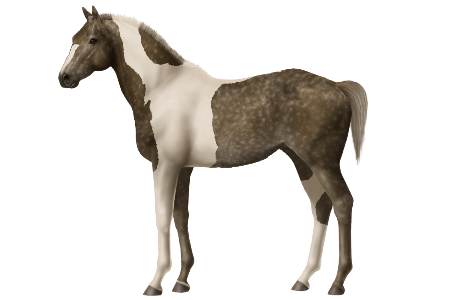
-
BlackOak2
- Premium

- Posts: 10570
- Joined: Sat Jan 30, 2016 12:41 am
- Visit My Farm
Re: One Surprise Chestnut Colt?
Post by BlackOak2 »
The parents are simply unknown for if they're double Z or just single Z, as well as the foals, they could be double Z, single Z or a mix, even the chestnut. In the case of dominant genes, the only way to really tell if they're one or the other, is if they pop a foal you're not expecting (just like your chestnut foal), thus proving that they're a half and half rather than a double. We can't really prove they're a double until our gene testing comes out...ArcticDahlia wrote:
Thank you for the responses y'all!! So to be clear... I guess I could label them Silver Dapple Heterozygous Black? Also, I'm trying to get used to the short labels that work with coat calculators; would this be an acceptable format:
(E/e Z/z)
I'm assuming since they produced a foal without dappling they're also heterozygous for Silver (Z), or could Tor have dappling "hidden" by chestnut since it can't show on that base (making him I guess (e/e Z/*))?
Or do we have no way to know, making the parents (E/e Z/*)?
Sorry, I get very confused on how the letters interact with each other genetically haha..
Also, another dapple on the tally lol
Akira
However, with enough generations of just the one type popping out, it can be legitimately offered that they're 'most likely' double dominant, because there hasn't been a sign of anything else for an 'X' amount of generations.
As for the color names, I always say to use what makes sense to YOU and reminds you of what you need to know about the color. I would simply call them silver dapples, then in the notes, I would likely write it something along the lines of: E/e Z/?
For the chestnut foal: e/e ?/?
If you always write them in the same format, then even if you have a couple of unknown questions, you'll still be able to recognize that it's an unknown silver.
To be clear: The silver is just hidden behind the chestnut. If you were to cross the foal with a black or an agouti and pop a black-based foal (black or bay or wild bay or brown) and the foal pops out with silver, then the chestnut has at least one silver gene. If it pops out without silver, then you will also know that the chestnut definitely has at least one NON-silver gene and that ONE of the chestnut's parents also only has one silver gene.
As a basic rule (for the most part), when writing it, dominant genes are usually written as capitol: E/E or E/e; but recessives are lower case: pr/pr or pr/n (pearl gene); and also, dominants are written in the first position while recessives are written in the second: E/e or Cr/pr.
However, how the gene coding is written, is up to how you want to read them. Many of us generally start with base color first (black/red) then move on to whatever in order of personal importance.
Don't forget to check it out!
Quick Start Guide For Newbies
Link to additional information.
BlackOak2's Quick-Links
Quick Start Guide For Newbies
Link to additional information.
BlackOak2's Quick-Links
-
ArcticDahlia
- Posts: 37
- Joined: Mon Apr 13, 2020 7:27 pm
- Visit My Farm
Re: One Surprise Chestnut Colt?
Post by ArcticDahlia »
That clears up sooo many questions I've been trying to figure out, thank you so much!!! It's so cool learning about this, there's so many layers and variables haha. Also, I'm not sure if this is already in any quick links but I was looking online the other day and found this, which I thought was pretty awesome and I kind of wanted to shareBlackOak2 wrote:The parents are simply unknown for if they're double Z or just single Z, as well as the foals, they could be double Z, single Z or a mix, even the chestnut. In the case of dominant genes, the only way to really tell if they're one or the other, is if they pop a foal you're not expecting (just like your chestnut foal), thus proving that they're a half and half rather than a double. We can't really prove they're a double until our gene testing comes out...ArcticDahlia wrote:
Thank you for the responses y'all!! So to be clear... I guess I could label them Silver Dapple Heterozygous Black? Also, I'm trying to get used to the short labels that work with coat calculators; would this be an acceptable format:
(E/e Z/z)
I'm assuming since they produced a foal without dappling they're also heterozygous for Silver (Z), or could Tor have dappling "hidden" by chestnut since it can't show on that base (making him I guess (e/e Z/*))?
Or do we have no way to know, making the parents (E/e Z/*)?
Sorry, I get very confused on how the letters interact with each other genetically haha..
Also, another dapple on the tally lol
Akira
However, with enough generations of just the one type popping out, it can be legitimately offered that they're 'most likely' double dominant, because there hasn't been a sign of anything else for an 'X' amount of generations.
As for the color names, I always say to use what makes sense to YOU and reminds you of what you need to know about the color. I would simply call them silver dapples, then in the notes, I would likely write it something along the lines of: E/e Z/?
For the chestnut foal: e/e ?/?
If you always write them in the same format, then even if you have a couple of unknown questions, you'll still be able to recognize that it's an unknown silver.
To be clear: The silver is just hidden behind the chestnut. If you were to cross the foal with a black or an agouti and pop a black-based foal (black or bay or wild bay or brown) and the foal pops out with silver, then the chestnut has at least one silver gene. If it pops out without silver, then you will also know that the chestnut definitely has at least one NON-silver gene and that ONE of the chestnut's parents also only has one silver gene.
As a basic rule (for the most part), when writing it, dominant genes are usually written as capitol: E/E or E/e; but recessives are lower case: pr/pr or pr/n (pearl gene); and also, dominants are written in the first position while recessives are written in the second: E/e or Cr/pr.
However, how the gene coding is written, is up to how you want to read them. Many of us generally start with base color first (black/red) then move on to whatever in order of personal importance.
https://www.etalondx.com/horse-genes-coat-color
It didn't help much with my specific situational questions like this but its got a bunch of the quick abbreviations for colors and all that which I love.
EDIT: One more question I'm sorry
-
BlackOak2
- Premium

- Posts: 10570
- Joined: Sat Jan 30, 2016 12:41 am
- Visit My Farm
Re: One Surprise Chestnut Colt?
Post by BlackOak2 »
ArcticDahlia wrote:
That clears up sooo many questions I've been trying to figure out, thank you so much!!! It's so cool learning about this, there's so many layers and variables haha. Also, I'm not sure if this is already in any quick links but I was looking online the other day and found this, which I thought was pretty awesome and I kind of wanted to share
https://www.etalondx.com/horse-genes-coat-color
It didn't help much with my specific situational questions like this but its got a bunch of the quick abbreviations for colors and all that which I love.
EDIT: One more question I'm sorryFor the dapple foals from them, since both parents are E/e, I'm assuming there's a 50/50 chance on them being E/e vs. E/E, correct (so I would have to breed in order to find out which they are)?
I don't like to link off-site in my quick-links, because it's off-site.
But that is certainly a good-looking link. I'll throw it into my quicklinks for reference.
Last edited by BlackOak2 on Mon Jul 13, 2020 9:06 pm, edited 1 time in total.
Don't forget to check it out!
Quick Start Guide For Newbies
Link to additional information.
BlackOak2's Quick-Links
Quick Start Guide For Newbies
Link to additional information.
BlackOak2's Quick-Links
-
BlackOak2
- Premium

- Posts: 10570
- Joined: Sat Jan 30, 2016 12:41 am
- Visit My Farm
Re: One Surprise Chestnut Colt?
Post by BlackOak2 »
In reference to your edit, have you ever used the Punnett Square? This will help to identify how many likely offspring will result from a set of parents. Since both parents are hetro for black, they have a 50% to throw single blacks, 25% to throw double blacks and 25% to throw chestnuts. It can be looked at as 75% black-based foals and 25% chestnut.
Don't forget to check it out!
Quick Start Guide For Newbies
Link to additional information.
BlackOak2's Quick-Links
Quick Start Guide For Newbies
Link to additional information.
BlackOak2's Quick-Links
-
ArcticDahlia
- Posts: 37
- Joined: Mon Apr 13, 2020 7:27 pm
- Visit My Farm
Re: One Surprise Chestnut Colt?
Post by ArcticDahlia »
Oh sorry, I worded that wrong haha. I was double-checking if both the parents turned out to be Z/z, the foals could either be Z/Z, Z/z, or z/z? I was trying to figure out how I could know if some foals were Z/Z (I guess by breeding them to non-chestnut/agouti horses?)BlackOak2 wrote:In reference to your edit, have you ever used the Punnett Square? This will help to identify how many likely offspring will result from a set of parents. Since both parents are hetro for black, they have a 50% to throw single blacks, 25% to throw double blacks and 25% to throw chestnuts. It can be looked at as 75% black-based foals and 25% chestnut.
Return to “What Colour Is My Horse?”
Jump to
- General Discussion
- ↳ Announcements
- ↳ Weekly Development Updates
- ↳ General Chit Chat
- ↳ Contests
- ↳ What Colour Is My Horse?
- ↳ Comments and Suggestions
- ↳ Suggestions Archive
- ↳ Breeding Communities
- ↳ Farm Logs
- Marketplace
- ↳ Horses for Sale
- ↳ Stallions at Stud
- Knowledgebase & Guides
- ↳ Gameplay Questions & Help
- ↳ Guides & How To
- Technical
- ↳ Change Log v3
- Guest Discussions
- ↳ Public Questions & Answers

